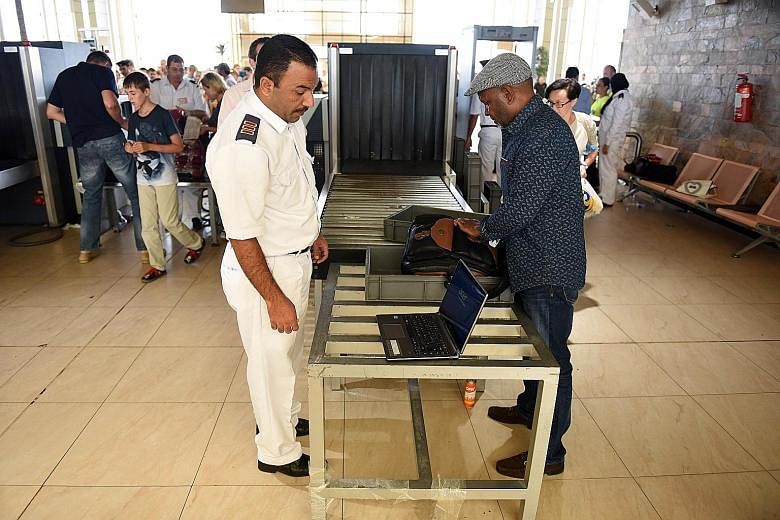PARIS • Airport safety is in the spotlight after a Russian plane crashed in the Sinai Peninsula, with investigators suspecting it was brought down by a bomb inside the aircraft.
Experts consider that baggage controls are, on the whole, reliable and that the biggest risks come from collusion by airport personnel.
Here we take a closer look at the issue.
HOW IS HOLD LUGGAGE CHECKED?
The first control is carried out by the airline to ensure that each passenger who checks in baggage is actually on the plane. "This is an international obligation," said Mr Sebastien Caron, director-general of ASCT International, a French-based company that specialises in airport security.
"In Europe, check-in baggage is then passed through an advanced automatic X-ray machine that can detect 99 per cent of the molecules used in explosives," he said.
"On average, 30 per cent of luggage needs to be checked by a security agent who will then send around 5 per cent, for which doubts remain, to another machine, a tomograph (CAT scanner).
"At this point 99 per cent of the luggage is sent on to the (plane) holds, but if at the end of this stage, the security services believe additional verification is required, then the owner of the bag in question is called into a search room and the bag is opened.
"Elsewhere in the world the security system is often the same, but we don't have details of the equipment used at Sharm el-Sheikh airport," from where the ill-fated Russian plane took off on Oct 31.
HOW RELIABLE IS THIS SYSTEM?
"The reliability levels are very high" for the checking of luggage, thanks notably to the X-rays, so that "since the 1980s no one has been able to get a bomb" into a plane's hold, according to French aviation security expert and former pilot Xavier Tytelman.
But "we know that in a general sense there are flaws". "A large metal plate" could, for example, be used to hide explosive material from scanning machine operators.
"Normally, if there is any doubt", the operator will take the suspect bag for a manual search, but this takes time and manpower.
HOW TO GET AROUND SECURITY SYSTEMS?
Mr Caron said weak spots remain. "There are carry-on bags that could be brought on, voluntarily or not, by passengers. There remains a vulnerability in the holds given the volume of baggage moved," he said.
Then there are on-board meals and the equipment used to clean planes which involves more personnel who "could be complicit in introducing illicit items, or intruders sneaking into restricted areas".
"In most cases (of successful or attempted attacks) airport personnel are involved. A baggage handler could very well, once the bags are checked in, add a booby-trapped bag in the hold. But this involvement is not necessarily voluntary, because someone could, for example, put pressure on an airport worker.
"Statistically, there is an attempt in international airports every six months, which could potentially have grave consequences."
AGENCE FRANCE-PRESSE

